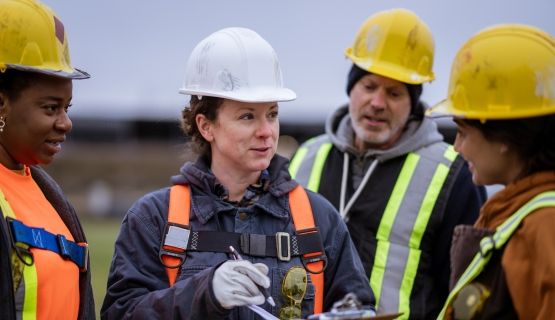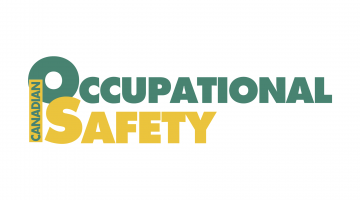Illness/injury prevention
IWH has a long history of conducting research to provide practical guidance to employers, workers, OHS professionals and regulators about what works and what doesn’t in injury or illness prevention. This research targets the injury and illness prevention practices of workplaces, as well as the programs developed by governments, health and safety associations and others to support and motivate workplaces to adopt effective practices.
Featured

At Work article
Differences in firm-level AI use for health and safety
To what extent are Canadian workplaces using artificial intelligence (AI) to help support workers’ health and safety? And what do these workplaces have in common? An IWH study surveyed firms across Ontario and British Columbia to find out.
Published: October 8, 2025

Impact case study
Saskatchewan’s construction safety group uses IWH tool to improve safety culture
This case study details how the Saskatchewan Construction Safety Association (SCSA) members have been analyzing IWH-OPM scores to adjust their safety practices and how SCSA has been using the data to tailor their outreach.
Published: February 10, 2025
Systematic Review
Systematic Review
Effective workplace-based return-to-work interventions: a systematic review update
This report synthesizes the evidence from a systematic review on the effectiveness of workplace-based return-to-work interventions and updates the Institute's 2004 systematic review on the same subject. This update brings in evidence published since 2004, and expands upon the original systematic review by including work absences due not only to musculoskeletal disorders, but also to mental health and pain-related conditions.
Published: February 2017
Project report
Project report
Auditing the internal responsibility system in Ontario's mining industry
IWH, in collaboration with Workplace Safety North, piloted a workplace questionnaire to measure perceptions of practices related to the internal responsibility system in Ontario's mining sector. This February 2017 presentation provides an overview of the development of the instrument, called the Internal Responsibility System Climate Assessment and Audit Tool (IRS CAAT), and the psychometric analysis of that instrument at four mining operations.
Published: February 2017

At Work article
OHS vulnerability as defined by IWH tool linked to self-reported injury rates
So you've answered 27 questions on the OHS Vulnerability Measure. What does your score say about your injury risk?
Published: February 2017

IWH in the media
Increased OHS vulnerability linked to higher rates of self-reported injury: study
Workers who report being vulnerable because they are exposed to job hazards from which they are not adequately protected by workplace policies, awareness programs or empowerment mechanisms also report much higher rates of work-related injury.
Published: Canadian Occupational Safety, January 2017
Project
Project
Evaluating prevention strategies to reduce the risk of work-related cancers in Ontario’s construction sector
An IWH study is estimating future incidences cancers among construction workers in Ontario as a result of workplace exposures, and estimating the costs and benefits of intervention programs to reduce these exposures.
Status: Completed 2021
Project
Project
Evaluating an internal responsibility system audit tool for Ontario’s mining sector
IWH researchers tested the reliability and validity of the Internal Responsibility System Climate Assessment and Audit Tool (IRS CAAT), which embodies internal responsibility best practices for Ontario’s underground mines.
Status: Completed 2017
Project
Project
Evaluating the implementation and effectiveness of Ontario’s working-at-heights training standard
IWH researchers are examining the effectiveness of Ontario’s mandatory working-at-heights training standard and what is being learned about its implementation in construction workplaces.
Status: Completed
Project
Project
Identifying relevant OHS leading indicators in Manitoba's construction sector
IWH is collaborating with the Construction Safety Association of Manitoba (CSAM) to identify relevant leading indicators of injury and illness in the province’s construction sector, and to encourage their use through tools that creates a conversation about best practices in the sector.
Status: Completed 2019
Project
Project
Addressing literacy and numeracy gaps among workers in an OHS training program: a pilot study
Can we improve occupational health and safety (OHS) outcomes by embedding literacy and numeracy into OHS training? IWH researchers aimed to find out, by assessing a hoisting and rigging program that embeds these essential skills into the training.
Status: Completed 2017
Project
Project
Information and resource needs of newcomers to help ensure their safe integration into the labour market
This project looked at the needs of recent immigrants and refugees to Ontario to help ensure they can safely integrate into the Canadian labour market.
Status: Completed 2017